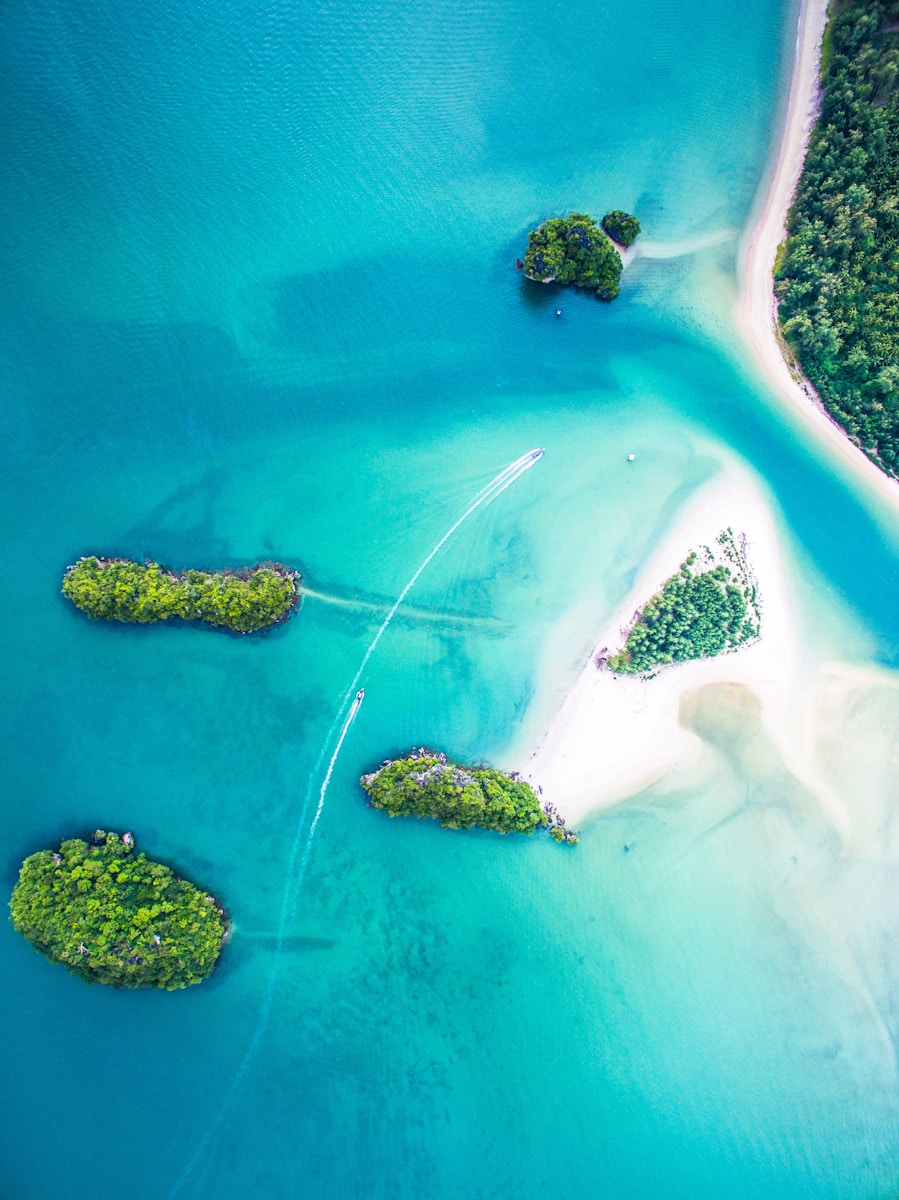- Looking for the best beaches in Africa? From postcard-perfect islands to wild coastal escapes, Africa is home to some of the most spectacular and diverse beaches on the planet. But we’re not just here to list pretty places — this guide is built to help you plan your actual trip with real, specific travel tips. Whether you’re a solo adventurer, honeymooner, digital nomad, or traveling with kids, there’s a beach here for you.Let’s dive into the 7 best beaches in Africa — plus exactly how to enjoy them.
-
1. Zanzibar, Tanzania – Turquoise Waters, Marine Adventures & Cultural Charm
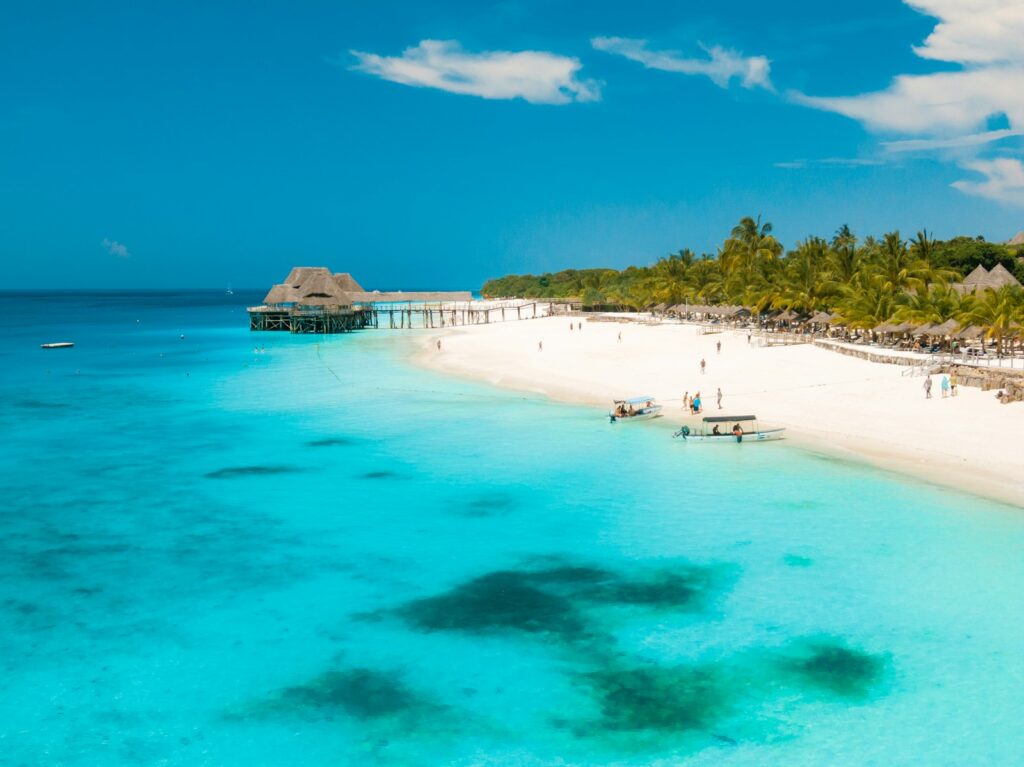
-
Zanzibar is hands-down one of the best beach destinations in Africa. With its warm, turquoise waters, palm-fringed white sands, and vibrant Swahili culture, this Tanzanian island offers a perfect mix of relaxation, adventure, and historical exploration — all within a relatively compact area.
Travel Tips for Zanzibar
- Currency: Tanzanian Shilling (TZS), but USD is widely accepted in tourist areas. However, carrying Tanzanian Shillings is advisable for local transportation like dala dalas.
- Best Time to Visit: June to October (dry season), or December to February for watersports
- Health: Yellow fever certificate may be required. Bring mosquito repellent.
- Local Etiquette: Zanzibar is 99% Muslim — cover shoulders when away from the beach
- Negotiation: When using taxis, especially those not pre-booked, it’s common practice to agree on the fare before starting your journey.
- Safety: Always use licensed and reputable transportation providers.
- Avoid swimming during extreme low tide (check tide charts online).
How to Get to Zanzibar
Zanzibar is accessible by both air and sea, with several options depending on your starting point:
By Plane
- From Dar es Salaam: Multiple daily flights (approx. 20–30 min) by local airlines like Precision Air and Coastal Aviation. Prices range from $40–$100 USD one-way.
- From Nairobi, Kenya: Direct flights via Kenya Airways or Air Tanzania, usually around $150–$250 USD.
- From Europe or Middle East: Qatar Airways, Turkish Airlines, and Emirates offer connections via Doha, Istanbul, or Dubai.
You’ll arrive at Abeid Amani Karume International Airport (ZNZ), located about 15 minutes from Stone Town.
From the Airport to Your Hotel
- Taxi: Approx. $15 USD to Stone Town; $30–$50 USD to farther beaches like Nungwi or Paje. Use a service like Zanzibar Airport Transfers for reliable service.
- Shared Shuttle: The Zanzibus offers air-conditioned shared rides to/from major towns — from $15–$25 USD per person.
- Public Transport: “Dala dalas” (local minibuses) cost less than $1 USD but are very crowded and not recommended with luggage.
By Ferry (from Dar es Salaam)
The Azam Marine ferry runs 4 times daily, taking about 2 hours. Prices:
- Economy: $35 USD
- VIP Class: $50 USD
Getting Around Zanzibar
Navigating Zanzibar is straightforward, with several transportation options available:
- Shuttles and Taxis: For reliable and comfortable transfers, consider services like The Zanzibus, which offers both shuttles and private taxis. Another reputable provider is Zanzibar Airport Transfers, specializing in 24-hour taxi services to and from the airport and hotels.Zanzibar Airport Transfers+3The Zanzibus+3The Zanzibus+3Zanzibar Airport Transfers
- Dala Dalas (Local Buses): For a more local experience, dala dalas are an affordable option. These shared minibuses connect various parts of the island. However, they can be crowded and may not adhere to strict schedules.
Top Beaches and Activities
Nungwi (North)
Nungwi is renowned for its vibrant atmosphere, stunning sunsets, and a variety of water activities.
Things to Do:
- Snorkeling and Diving: Explore the underwater wonders with Dreams Diving Center, a local diving center offering scuba diving and snorkeling services.
- Equipment Rental: For diving gear, Diving in Zanzibar provides free gear rental included in their diving packages.
Kendwa (Northwest)
Kendwa offers a more tranquil setting compared to Nungwi, with expansive beaches and clear waters.
Things to Do:
- Beach Relaxation: Enjoy sunbathing and swimming in the calm, turquoise waters.
- Water Sports: Engage in activities like jet skiing; rentals are available through various providers.Lappet Faced Safaris
More Snorkeling & Diving in the Area:
Mnemba Atoll Trips (near Nungwi & Kendwa): Crystal-clear waters and coral reefs.
- Book with Spanish Dancer Divers (Nungwi) – snorkeling from $30, diving from $70
- One Ocean Diving (Stone Town & Matemwe) – gear included in packages
Gear Rental: All above offer mask, fins, wetsuit rental. Prices usually included in activity cost.
Paje & Jambiani (Southeast)
These beaches are famed for their consistent winds, making them ideal for kite surfing.
Kite Surfing in Paje & Jambiani
- Kite Centre Zanzibar (kitecentrezanzibar.com) – lessons from $50 USD/hour, rentals available.
- Zanzibar ProKite (zanzibar-prokite.com) – offers private & group IKO-certified lessons and full gear rental.
- Aquaholics Zanzibar (aquaholics-zanzibar.com) – offers wave surfing, SUP, and guided trips.
Tip: Wind season is best from mid-Dec to early March and June to September.
Explore UNESCO World Heritage Site: Stone Town
Stone Town is a fine example of the Swahili coastal trading towns of East Africa, retaining its urban fabric and townscape virtually intact. Its architecture reflects a unique blend of African, Arab, Indian, and European influences
Stone Town is located on the western coast of Unguja, the main island of the Zanzibar Archipelago, about 10–15 minutes from the airport.
What to See:
- House of Wonders – Zanzibar’s first building with electricity and an elevator
- Sultan’s Palace – now a museum with insights into royal life
- Freddie Mercury House – birthplace of Queen’s lead singer
- Old Fort – a 17th-century fort now hosting shops, art, and music
- Darajani Market – for a dose of local life and spicy souvenirs
- Cultural Experiences: Wander through narrow alleys bustling with markets, and admire the distinctive Zanzibari doors and architecture.
Additional Information:
For more details, visit the UNESCO World Heritage Centre’s page on Stone Town.
Self-Guided Tours: Try an app like VoiceMap or hire a local guide from your hotel or at the Old Fort (approx. $10–$15 USD for 1–2 hours).
Pro Tip: Visit around 5–6 PM when it cools down and streets come alive.
Arriving to Stone Town from Zanzibar Airport
The airport is approximately 7–8 kilometers (4.3–5 miles) from Stone Town. Travelers have several options to make this short journey:
Taxi Services
- Private Taxis: Widely available outside the airport terminal. A standard one-way fare to Stone Town is around $15 USD. It’s advisable to confirm the fare with the driver before starting your trip. Tripadvisor
- Pre-Booked Transfers: For convenience, consider booking in advance with services like Zanzibar Airport Transfers. They offer 24/7 services with prices starting at $15 USD for a sedan.
Dala Dala (Public Minibuses)
- Route: Dala dalas are an economical choice, costing approximately 400 Tanzanian Shillings (about $0.15 USD) for a one-way trip. They depart from the airport to Stone Town without a fixed schedule, leaving when full. Welcome Pickups
- Experience: While affordable, dala dalas can be crowded and may not accommodate large luggage comfortably.WeAreZanzibar
Driving by Car
- Route: If renting a car, exit the airport and take Nyerere Road directly to Stone Town. The drive typically takes about 15 minutes, depending on traffic.
- Parking: Parking in Stone Town is limited; ensure your accommodation provides parking facilities.
Arriving To Stone Town from Other Parts of Zanzibar
Stone Town serves as the central hub for transportation across the island:
Dala Dala Routes
- From Nungwi or Paje: Direct dala dalas connect these areas to Stone Town. Fares are approximately 2,500 Tanzanian Shillings (about $1 USD).
- Transfers: For other locations, you may need to transfer in Stone Town to reach your final destination.
Private Transfers
- Services: Companies like The Zanzibus offer private transfers from various parts of the island to Stone Town. Prices vary based on distance and vehicle type.
Where to Stay in Zanzibar
Zanzibar has accommodation options for every kind of traveler — whether you’re on a tight budget, want a boutique seaside stay, or are treating yourself to a luxurious beachfront escape. Here are some top picks that combine location, comfort, and great reviews:
- Budget: Drifters Backpackers Hostel – Paje
Located just a 3-minute walk from Paje Beach on the southeastern coast, this lively hostel offers dorms and private rooms starting around $25 USD/night. It’s popular with solo travelers and kite surfers, with a great social atmosphere and close proximity to kite schools. - Mid-Range: Baladin Zanzibar – Jambiani
Nestled right on the beach in the chilled-out village of Jambiani, this boutique eco-lodge is known for its organic design, on-site brewery, and sea-view villas. Prices start at around $80–$120 USD/night, and it’s just 10 minutes from the kite surfing hotspot of Paje. - Luxury: Zuri Zanzibar – Kendwa
Located in Kendwa on the northwest coast, Zuri is a world-class luxury resort offering private bungalows and villas with direct beach access. It’s one of the few beaches in Zanzibar with almost no tidal changes, making it perfect for all-day swimming. Rates begin around $500 USD/night and can go higher for private villas.
Other options are booking sites like Expedia.com or Hotels.com, where you can search for more accommodations using filters to cater to what you are looking for.
2. Seychelles – Secluded Shores, Granitic Beauty & Island Hopping
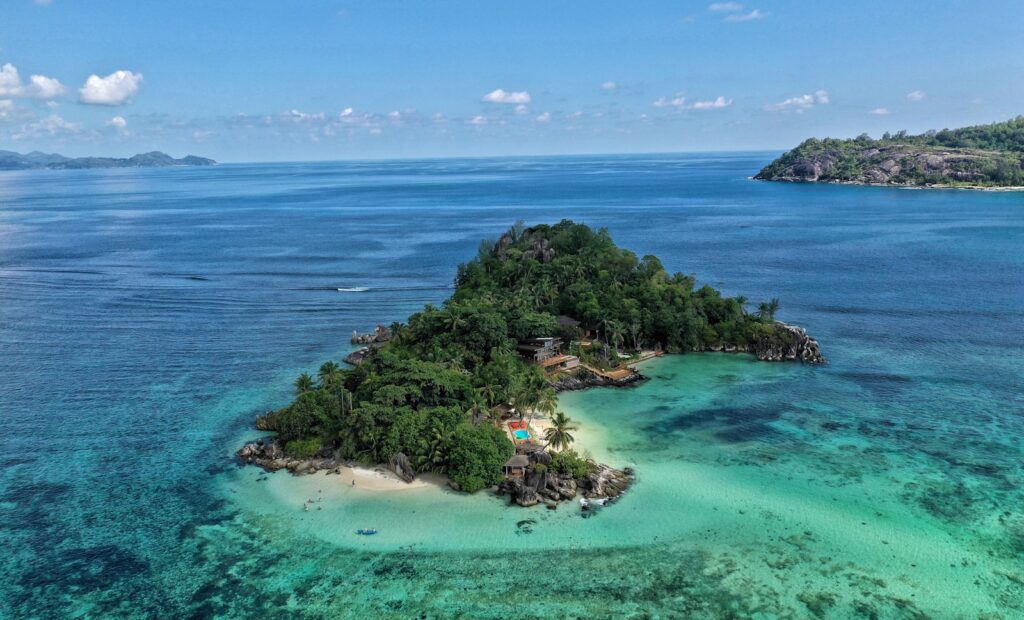
-
The Seychelles archipelago is a dream destination for beach lovers who crave tranquility, jaw-dropping natural beauty, and a bit of barefoot luxury. With granite boulders lining turquoise bays and palm trees swaying in the breeze, Seychelles offers some of the most iconic beaches in the world — and plenty of hidden gems if you know where to look.
Travel Tips for Seychelles
- Currency: Seychellois Rupee (SCR). Credit cards are widely accepted, but carry some cash for small vendors or remote islands.
- Best Time to Visit: April to May and October to November offer the calmest seas and ideal weather.
- Health: No vaccines required for entry from most countries, but bring reef-safe sunscreen and insect repellent.
- Local Etiquette: Dress modestly in towns and villages. Beachwear is for the beach only.
- Safety: Seychelles is very safe, but avoid swimming in areas with strong currents and always check local warnings.
How to Get to Seychelles
Seychelles is served by the Seychelles International Airport (SEZ) located on the main island of Mahé. You can reach it via:
International Flights
- From Europe: Direct flights from Paris (Air France), Frankfurt (Condor), and London (British Airways)
- From the Middle East: Emirates (via Dubai), Qatar Airways (via Doha), Etihad (via Abu Dhabi)
- From Africa: Kenya Airways (via Nairobi), Ethiopian Airlines (via Addis Ababa), and Air Mauritius
From the Airport to Your Hotel
- Taxi: Taxis are available outside the airport and can take you anywhere on Mahé. Expect to pay around SCR 500–600 ($35–$45 USD) for a 30–40 minute ride. Confirm price before starting your trip.
- Private Transfer: Pre-book with providers like Mason’s Travel or Creole Travel Services for air-conditioned van or car transfers.
- Public Bus: SPTC (Seychelles Public Transport Corporation) operates buses throughout Mahé and Praslin. Fares are SCR 7 ($0.50 USD). Buses don’t run late at night and don’t allow large luggage. Bus info: www.sptc.sc
Inter-Island Transport
To explore Praslin and La Digue, you’ll need a ferry or a domestic flight:
- Ferry: Cat Cocos operates between Mahé, Praslin, and La Digue. Fares range from €50–€70 depending on class and destination.
- Flights: Air Seychelles runs 15-minute flights between Mahé and Praslin from around $70–$100 USD one-way.
Pro tip: Ferries fill up fast — book early, especially on weekends.
Getting Around the Islands
- Mahé: Rent a car (from $45/day) or use taxis and buses
- La Digue: No cars! Rent a bicycle (around $8–$10/day) or walk
- Praslin: Taxis, buses, or rental cars/scooters
Top Beaches and Activities
Anse Intendance (Mahé)
Wild, dramatic, and perfect for photos. Strong currents make it better for relaxing than swimming.
Things to Do:
- Sunbathe on the wide, soft-sand shore
- Spot sea turtles early in the morning
- Capture stunning granite-and-ocean shots
Anse Major (Mahé)
Only accessible by boat or a scenic hike (1.5 hours one way from Danzil Trailhead). Worth every step.
Things to Do:
- Snorkel in calm, fish-filled waters
- Pack a picnic (no restaurants here!)
- Hike with Mason’s Travel or go solo
Anse Takamaka (Mahé)
A serene crescent beach with a casual vibe.
Things to Do:
- Enjoy gentle swimming
- Grab lunch at the beachfront Chez Batista Restaurant
- Watch sunset from the shore
Anse Lazio (Praslin)
Often ranked one of the world’s best beaches.
Things to Do:
- Swim and snorkel near the rocks (gear available for rent at the beach stalls)
- Visit early morning or late afternoon for fewer crowds
Anse Source d’Argent (La Digue)
Famous for its granite formations and calm, clear water.
Things to Do:
- Snorkeling and kayaking (rentals available at entrance)
- Sunset photography (Instagram gold)
- Entry through L’Union Estate Farm (fee approx. $10 USD)
Snorkeling, Diving & Equipment Rentals
- Blue Sea Divers (blueseadivers.com) – Based in Beau Vallon (Mahé), they offer dive trips from €70, snorkeling from €40
- Dive Seychelles Underwater Centre (diveseychelles.com) – Mahé-based, ideal for beginners and PADI-certified courses
- Octopus Diving Center (octopusdiver.com) – Located on Praslin; daily boat dives, gear included
- Snorkel gear rental: Available at many beach shops on Mahé and Praslin; rates range from €5–€10 per day
Kayaking & Paddleboarding
- Rent gear at Beau Vallon Beach or Anse La Mouche
- iSurf Seychelles offers SUP yoga, board rental, and guided trips from €20/hr
Where to Stay in Seychelles
Seychelles caters to every traveler — from budget backpackers to those chasing honeymoon luxury. Here are a few top picks by category:
- Budget: La Roussette Hotel – Mahé
A cozy, family-run guesthouse located just 10 minutes from the airport and Anse Royale beach. Rooms from $90 USD/night include breakfast and pool access. Great for proximity to quiet beaches and local eateries.
In the context of accommodations in Seychelles, this rate that is on the lower end of the spectrum. Traditional hostels with dormitory-style rooms are scarce in Seychelles; instead, budget travelers often opt for guesthouses or small hotels. For instance, Villa Chez Batista in Takamaka offers rooms averaging around $85 USD per night . Although it seems expensive, $90 USD per night is considered affordable for the region.
- Mid-Range: Le Repaire Boutique Hotel – La Digue
Just steps from the ferry terminal and Anse Réunion Beach, this charming boutique hotel offers beachfront views, modern comfort, and an Italian restaurant on-site. Rooms from $180 USD/night. - Luxury: Constance Lemuria – Praslin
Located next to Anse Georgette, one of Seychelles’ most secluded beaches, this 5-star resort has a golf course, infinity pools, and private villas. Prices start around $650 USD/night.
Other options: Check Booking.com, Expedia, or Hotels.com for even more stays filtered by budget, island, or beachfront access.
3. Cape Town, South Africa – Stunning Beaches, Surfing, and Cultural Experiences
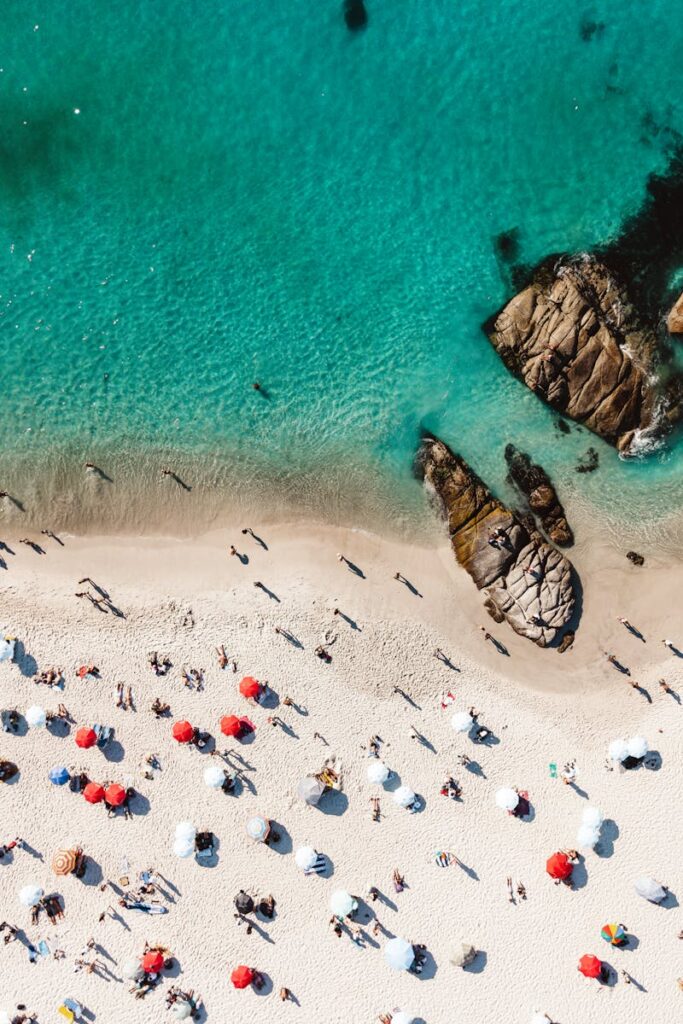
Cape Town is renowned for its breathtaking beaches, vibrant surf culture, and rich history. Whether you’re a sunbather, surfer, or history enthusiast, Cape Town offers a diverse array of attractions to suit all tastes.
Travel Tips for Cape Town
- Currency: South African Rand (ZAR). Credit cards are widely accepted, even for small purchases, but carrying some cash is advisable for smaller establishments.
- Best Time to Visit: November to March for summer weather and beach days. December and January are the hottest and busiest months. October to April for beach activities and outdoor adventures.
- Health: No vaccinations required unless arriving from a yellow fever risk country. Tap water is safe to drink in the city. Cape Town is malaria-free. Standard vaccinations are recommended.
- Local Etiquette: Tipping around 10-15% in restaurants is customary. Casual beachwear is fine on the sand, but dress modestly in shops, restaurants, and public transport.
- Safety: Cape Town is relatively safe in tourist areas, but take standard precautions—avoid walking alone at night and don’t leave valuables unattended on the beach. Avoid displaying valuables openly and be vigilant in less crowded areas.
- Sea Conditions: The Atlantic side beaches are cold year-round (12–16°C), with occasional strong currents. Only swim in designated areas with lifeguards.
How to Get to Cape Town
Cape Town is served by Cape Town International Airport (CPT), which is located about 20 km (12 miles) from the city center. Most international travelers arrive here by plane.
From the Airport to the City Center:
- Taxi: Official metered taxis are available at the airport but can be expensive (R350–R450 / $20–$25 USD to the city center). Always agree on the fare in advance.
- Ride-Hailing Services: Uber and Bolt operate throughout Cape Town and are cheaper and more reliable than taxis. Airport to the city costs around R200–R300 ($10–$15 USD).
- Shuttle Services: Many hotels offer airport shuttles, or you can pre-book with companies like Centurion Tours or Citi Hopper. Expect to pay R300–R500 ($15–$28 USD).
- Public Bus: The MyCiTi Bus runs from the airport to the Civic Centre in downtown Cape Town. Cost: R100 ($5.50 USD), plus a once-off card fee. No large luggage allowed.
- More info: https://www.myciti.org.za
Getting Around Cape Town
- Rideshare: Uber and Bolt are widely used and affordable. They’re the best way to get between beaches if you don’t have a car.
- Car Rental: Driving is on the left. Roads are good, and rentals start around R400/day ($22 USD). Parking is available near most beaches.
- Public Transport: Minibus taxis are not recommended for visitors. The MyCiTi Bus is safe, clean, and reliable for certain routes (e.g. city to Table View or Hout Bay). Fares are distance-based; for example, a 10–20 km trip costs around ZAR 21.50 during peak hours and ZAR 17.00 off-peak.
- Hop-On, Hop-Off Bus: The red City Sightseeing buses offer beach-inclusive routes like Camps Bay and Hout Bay, ideal if you want to explore without a car.
Top Beaches and Activities
Camps Bay
A lively, palm-lined beach backed by the Twelve Apostles mountains. It’s Cape Town’s most glamorous beach, with a long promenade full of restaurants and cafes.
Things to Do:
- Relax on the sand and people-watch
- Have cocktails at Café Caprice or sunset dinner at The 41
- Walk along the scenic Victoria Road for photos and street vendors
Getting There from the City Center:
- By Bus: MyCiTi Bus Route 106 or 107 from the Civic Centre station to Camps Bay.
- By Car: Approximately 15 minutes via M62. Limited parking is available near the beach.
Clifton Beaches (1st to 4th)
A series of four secluded beaches, separated by giant boulders, each with its own vibe. Clifton 4th is the most family-friendly, while Clifton 1st is popular with surfers.
Things to Do:
- Bring your own umbrella and picnic (there are no food stalls)
- Swim and sunbathe — waters are icy but crystal clear
- Access via long stairways from the road above (no wheelchair access)
Getting There from the City Center:
- By Bus: MyCiTi Bus Route 108 or 109 from the Civic Centre station to Clifton.
- By Car: About 15 minutes via M6. Street parking is available along Victoria Road.
Muizenberg
Located on the False Bay coast, Muizenberg is a surfer’s paradise with warmer water and iconic rainbow-colored beach huts.
Surfing in Muizenberg
Surf Lessons:
- Gary’s Surf School: Established in 1989, offering beginner to intermediate lessons, from R350 ($18 USD) for 1.5-hour beginner lessons. Located at 34 Balmoral Building, Beach Road, Muizenberg.
- Surf Emporium: Provides accredited surf and SUP lessons for all ages and skill levels. Gear rental from R100–R200 / $5–$10 USD. Situated at 72 Beach Road, Surfers Corner, Muizenberg.
- Stoked Surf School: Offers tailored surf experiences, including lessons and guided surf trips.
Equipment Rentals:
- Lifestyle Surf Shop: Offers a range of surfboards and wetsuits for rent. Board rental from R100/hr, wetsuit from R50/hr. Located at Surfer’s Corner, 21 York Road, Muizenberg.
Getting There from the City Center:
- By Train: Southern Line from Cape Town Station to Muizenberg Station.
- By Car: Approximately 30 minutes via M3. Parking is available near the beachfront.
Llandudno
A secluded, crescent-shaped beach popular for surfing and sunbathing. There are no shops or restaurants, so bring everything you need.
Things to Do:
- Chill out in a more tranquil setting
- Catch some waves (intermediate surfers only)
- Watch the sunset with a bottle of wine (allowed, but drink responsibly)
Getting There from the City Center:
- By Car: Approximately 25 minutes via M6. Limited parking is available near the beach.
Boulders Beach
Famous for its African penguin colony. Located in Simon’s Town, about 45 minutes from the city.
Things to Do:
- Visit the penguin viewing boardwalk (entry: R190 / ~$10 USD for adults)
- Swim in the sheltered coves near the colony
- Combine with a day trip to Cape Point
Getting There from the City Center:
- By Car: About 40 minutes via M4. Parking is available near the entrance.
- By Train: Southern Line to Simon’s Town Station, followed by a short taxi ride.
Kite Surfing in Cape Town
Bloubergstrand: Renowned for consistent winds, making it a kitesurfing paradise.
- Best kite conditions at Bloubergstrand (Table View) and Langebaan (1.5 hours north)
- Cape Town Kite Club (https://www.capetownkiteclub.com/) offers rentals, IKO lessons, and gear storage. Also offers premium accommodation for kitesurfers and windsurfers. Located at 92 Sir David Baird Drive, Big Bay, Bloubergstrand.
- High season: December–March
Where to Stay in Cape Town
Cape Town offers beachfront hostels, boutique hotels, and luxury apartments with sea views. Here are three great options:
- Budget: Mojo Hotel – Sea Point
Located two blocks from the Sea Point Promenade and walking distance to local markets and ocean pools. Offers dorm beds and private rooms from $20–$40 USD/night. Great value and social vibe.
Another good option is The Backpack, a centrally located hostel offering dorms and private rooms, known for its sustainable practices.
- Mid-Range: The Glen Boutique Hotel & Spa – Sea Point
Situated in Sea Point, a stylish adults-only hotel with pools, a spa, and easy access to Clifton and Camps Bay. Rooms from $100–$140 USD. Great option for couples or digital nomads looking for comfort and charm. - Luxury: The Bay Hotel – Camps Bay
Right on the beachfront, The Bay offers ocean-view suites, rooftop pools, and in-house dining with direct access to Camps Bay Beach. Rooms from $250–$350 USD per night depending on the season.
Also check One&Only Cape Town, located at the V&A Waterfront, featuring luxurious rooms with panoramic views and world-class amenities. You can also explore more accommodation options on Booking.com, Expedia, or Hotels.com filtered by location, amenities, and budget.
4. Mozambique – Tropical Beaches, Whale Sharks, and Laid-Back Vibes
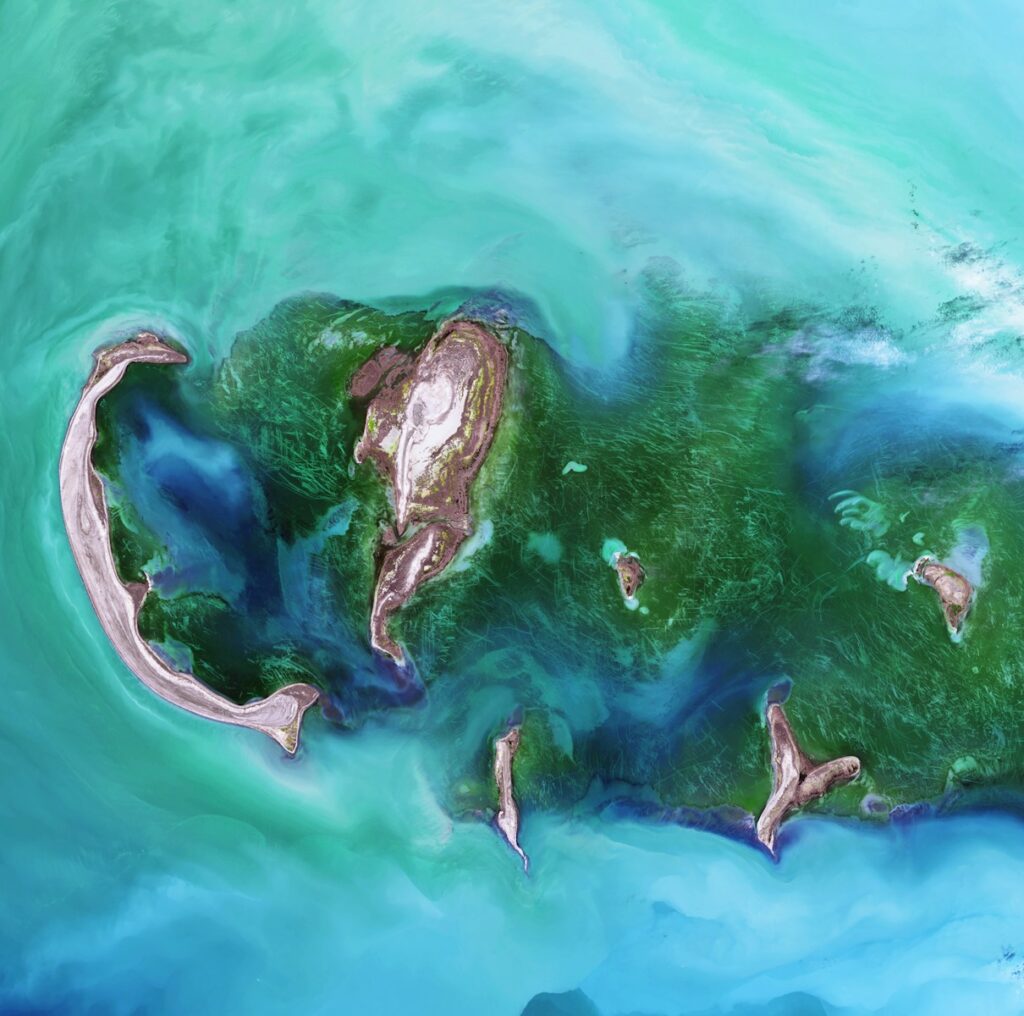
Mozambique is one of Africa’s most underrated beach destinations. Stretching along the Indian Ocean for over 2,500 km, its coastline is dotted with remote islands, coral reefs, and charming fishing villages. If you’re looking for warm waters, low-key beach towns, excellent diving, and fewer crowds, Mozambique offers a mix of rustic adventure and barefoot luxury.
Travel Tips for Mozambique
- Currency: Mozambican Metical (MZN). US dollars are widely accepted in tourist areas, but Meticais are best for local transport and small vendors. Bring cash — ATMs are not always reliable outside major towns.
- Best Time to Visit: May to October is the dry season with warm, sunny days and lower humidity. Whale shark season is best from October to February. If you’re planning to visit during high season (July–October or December holidays), book early, as transportation options and accommodations in smaller towns can sell out, especially for ocean safaris and island tours.
- Health: Yellow fever certificate required if coming from a risk country. Anti-malarial medication is highly recommended. Bring mosquito repellent and reef-safe sunscreen.
- Local Etiquette: Greetings are important and formal. Beachwear is fine on the sand but cover up in towns and markets.
- Safety: Mozambique is generally safe in beach towns like Tofo and Vilanculos. Avoid walking alone at night and stick to main roads after dark. Always drink bottled or filtered water.
- Transportation: Given the lack of centralized online information, it’s advisable for travelers to consult local sources upon arrival. Hotels and hostels often provide up-to-date details on transportation options, and locals can offer valuable insights into navigating the public transit system. Additionally, mobile apps like Moovit may offer some assistance in mapping out routes, though coverage may be limited.
How to Get to Mozambique
Mozambique’s beach destinations are somewhat remote, but there are multiple options depending on your starting point.
Fly into Maputo (MPM) for southern Mozambique (Tofo, Inhaca Island), or Vilanculos (VNX) for the Bazaruto Archipelago.
From the Airport to the Beach:
Tofo Beach (via Inhambane):
- Fly to Inhambane Airport (INH) via Maputo (LAM Mozambique)
- From the airport, take a local taxi to Tofo (approx. 30 minutes, $10–$15 USD)
- If flying into Maputo, you can also travel overland via bus (approx. 10–12 hours) or private shuttle
Vilanculos:
- Direct flights available from Johannesburg to Vilanculos (Airlink)
- From Vilanculos airport, you’re 10 minutes by taxi to the beach or port
- Use a tuk-tuk or local taxi for short-distance transfers
Public Transport:
- Minibuses (“chapas”) are the main form of local transport, but they can be crowded and unpredictable
- Private transfers can be arranged through most guesthouses and lodges
Getting Around Mozambique
- Tofo and Vilanculos are compact beach towns, so you can get around on foot, by tuk-tuk, or with local taxis.
- To explore islands in the Bazaruto Archipelago or go on snorkel/diving excursions, boats are organized through local tour companies or hotels.
- Private shuttles are best for long-distance travel between towns — check with your accommodation or use operators like Mozambique Transfers or Dana Tours.
Important Information on Transportation in Mozambique:
- In Mozambique, ride-sharing services are available primarily in major cities. While Uber operates in some areas, its presence is limited. Alternative platforms such as Bolt, Viva Taxi, Yango, and inDriver have gained popularity, especially in urban centers like Maputo and Beira.
- Regarding public transportation, Mozambique does not have a centralized online platform for schedules or routes. The primary mode of public transit consists of privately operated minibuses known as “chapas,” which are prevalent in cities like Maputo. These vehicles typically follow fixed routes but do not adhere to strict schedules.
- For intercity travel, buses connect major cities and towns, offering affordable fares. However, these services can be unreliable, with frequent breakdowns and delays.
- In Maputo, there is an integrated transport system called MetroBus, combining rail and bus services. This system aims to improve urban mobility by utilizing existing railway lines and feeder bus routes.
Top Beaches and Activities
Tofo Beach
A relaxed, surfer-meets-diver town with golden sands and warm water. Tofo has a youthful, backpacker-friendly vibe and is famous for marine wildlife. Tofo has open ocean in front of it, with moderate to strong waves depending on the season. The beach does have a steeper shore drop in some areas, especially at high tide.
Good for Swimming?
Yes, but with caution. Swimmers should be comfortable in the ocean and mindful of occasional strong currents. Lifeguards are not consistently present, so stay close to shore and avoid swimming alone.
Good for Children?
Not ideal for small children to swim unsupervised. However, on calmer days or during low tide, kids can splash around in shallower areas, especially near the tide pools.
Things to Do:
- Swim with whale sharks and manta rays on an ocean safari
- Snorkel in shallow reefs or take a boat trip to nearby Barra Reef
- Enjoy sunset drinks at restaurants like Happi or Casa de Comer
Getting There from Inhambane:
- Taxi: 30 mins from the airport (~$15 USD)
- Chapa (minibus): Very cheap but inconsistent timing
Local Providers:
- Peri-Peri Divers – Offers scuba diving and ocean safaris. PADI-certified. (https://www.peri-peridivers.com)
- Liquid Dive Adventures – Great for ethical whale shark encounters and dive courses (https://liquidmozambique.com)
- Snorkel gear rental is included with tours or available for 500 MZN/day ($8 USD)
Barra Beach
Just north of Tofo, Barra offers calmer waters and wide, flat beaches perfect for families or kayaking. Barra is protected by offshore coral reefs, which makes the water generally calm, especially compared to Tofo. The bay is shallow for a long stretch, and there’s no sudden depth drop.
Good for Swimming?
Yes. Barra is considered one of the safest beaches in the region for swimming, with gentle waves and warm, clear water.
Good for Children?
Absolutely. The long, shallow shoreline makes it a good choice for families with young kids. It’s also a great spot for stand-up paddleboarding and kayaking.
Things to Do:
- Kayak through the mangroves with a guided tour
- Try stand-up paddleboarding or quad biking along the beach
- Visit Flamingo Bay during low tide to spot birds and marine life
Getting There from Tofo:
- By taxi: 20–25 minutes (~$10 USD)
- Lodges in Barra often offer pick-up
Local Providers:
- Mozambeat Tours – Offers combo surf/kayak adventures and island tours
- Barra Reef Divers – Ideal for family snorkeling trips
Vilanculos and the Bazaruto Archipelago
Vilanculos is the jump-off point to Mozambique’s most beautiful beaches and island escapes. From here, you can reach Benguerra, Bazaruto, Magaruque, and Santa Carolina islands. The waters off Vilanculos are typically calm, protected by sandbanks and islands just offshore. Tides are significant, meaning the water retreats far during low tide but returns with very little wave action. In Bazaruto, the islands are surrounded by lagoon-like, crystal-clear waters with gentle waves. The surrounding reefs protect the beaches from heavy surf, creating ideal snorkeling and swimming conditions.
Is Vilanculos Good for Swimming and Children?
Yes for both. When the tide is in, Vilanculos offers excellent conditions for swimming, with clear, shallow, and warm water. There’s no strong surf or undertow. During high tide, it’s great for kids, with calm conditions and soft sand underfoot. Just be aware of the large tidal swings, and check with your accommodation about the best swimming times each day.
Is Bazaruto Good for Swimming and Children?
Yes for both as well — these beaches are excellent for swimming, especially on the western (leeward) sides of the islands. Visibility is usually fantastic for snorkeling, and the water is warm year-round. As for children, these beaches are very family-friendly, with gradual entries, soft sand, and little to no current in the swimming zones near most resorts. Just be aware of some deeper areas near reef drop-offs when snorkeling.
Things to Do:
- Take a traditional dhow sailing trip to Bazaruto or Benguerra Island
- Dive or snorkel at Two Mile Reef, one of the best in East Africa
- Walk the sand dunes of Bazaruto or go deep-sea fishing
Getting There from Vilanculos Airport:
- Local taxi: 10 minutes to beachfront accommodations
- Island trips: Arrange with hotels or tour operators at the port
Local Providers:
- Odyssea Dive (https://www.odysseadive.com) – Dive center offering full-day trips to the archipelago
- Sailaway Dhow Safaris – Day trips to islands with snorkeling, lunch, and dhow sailing
- Archipelago Resort and Baobab Beach also run in-house tours
Where to Stay in Mozambique
Mozambique has a growing selection of guesthouses, boutique beach lodges, and luxury island resorts.
- Budget: Mozambeat Motel – Tofo
Located 500m from Tofo Beach, this colorful lodge offers dorms, private rooms, a pool, and an on-site bar with live music. Dorm beds from $25 USD, private rooms from $50. Great social vibe and walkable to dive shops. - Mid-Range: Baobab Beach Backpackers – Vilanculos
Set on the beach with chalets, tents, and a great on-site restaurant. Offers dive/snorkel trips and dhow safaris. Private rooms from $60–$80 USD. - Luxury: Anantara Bazaruto Island Resort – Bazaruto Island
This upscale resort offers beachfront villas, diving, spa treatments, and private excursions to the archipelago. Prices from $500 USD/night, including transfers from Vilanculos. It’s ideal for couples, honeymooners, or anyone looking for a secluded, all-inclusive island experience with top-tier service. Access is via speedboat or small aircraft arranged by the resort.
You can also find more accommodations on Hotels.com or Expedia by filtering for beachfront access, budget, and guest reviews. Many local guesthouses also accept direct bookings via WhatsApp or email — it’s common and often cheaper, especially in Tofo and Vilanculos.
5. Diani Beach, Kenya – Palm-Fringed Sands, Turquoise Waters, and Swahili Hospitality
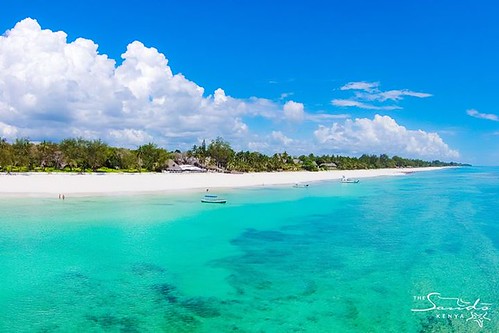
Diani Beach is Kenya’s most iconic coastal destination — a 17-kilometer stretch of powdery white sand backed by palm trees and the warm waters of the Indian Ocean. It’s the perfect mix of laid-back beach culture, adventure activities, and cultural experiences, ideal for both first-time travelers and seasoned tropical explorers. Whether you’re snorkeling over coral reefs, skydiving over the beach, or sipping fresh coconut water under a palm tree, Diani offers a smooth blend of nature and comfort.
Travel Tips for Diani Beach
- Currency: Kenyan Shilling (KES). USD is accepted at some resorts and dive shops, but you’ll get better rates paying in shillings. ATMs are available in Diani town, but not always on the beachfront.
- Best Time to Visit: December to March and July to October are the driest and sunniest periods. April and May can be very rainy. Whale shark season runs from November to February.
- Health: Malaria is present — bring mosquito repellent and consider anti-malarial medication. No yellow fever vaccine is required unless arriving from a high-risk country.
- Local Etiquette: Kenya is generally conservative; beachwear is fine on the sand but cover up in towns. A warm “Jambo” (hello) goes a long way — greetings are a key part of Swahili culture.
- Safety: Diani is considered one of the safest beach areas in Kenya. Still, avoid walking alone at night, and don’t leave valuables unattended on the beach. Use safes at hotels and lodges.
How to Get to Diani Beach
Diani is located on the south coast of Kenya, about 30 km south of Mombasa. Most travelers fly into Moi International Airport (MBA) in Mombasa or take a direct flight to Ukunda Airstrip (UKA), which is just 5–10 minutes from the beach.
Flying from Nairobi to Diani:
- Direct flights from Wilson Airport (WIL) to Ukunda (UKA) via Safarilink, Jambojet, and Skyward Express (about 1 hr). Fares from $50–$90 USD one-way.
- Flights arrive just minutes from most beachfront hotels.
Via Mombasa:
- Fly into Moi International Airport (MBA) and take a taxi to the Likoni Ferry, which crosses to the south coast.
- From the ferry, it’s about a 1.5–2 hour drive to Diani Beach (depending on traffic and ferry wait times).
Taxi or Shuttle from Mombasa to Diani:
- Taxi: From $40–$60 USD depending on your destination
- Private shuttles can be arranged through hotels or services like Southern Palms Transfers or Twende VIP Travel
Train Option:
- You can take the SGR train from Nairobi to Mombasa (around 6 hours), then transfer via ferry and taxi to Diani Beach. It’s a scenic, comfortable option with tickets from KES 1,000–3,000 ($8–$25 USD) depending on class.
Train info: https://metickets.krc.co.ke
Getting Around Diani Beach
Diani is compact and easy to explore:
- Tuk-tuks are everywhere and very affordable (KES 100–300 for most rides)
- Boda bodas (motorbike taxis) are common but best avoided unless you’re experienced
- Matatus (shared minibuses) run on the main road between Ukunda and nearby towns — cheap but not always tourist-friendly
- Car rental is possible, though not necessary unless you’re planning to explore outside Diani
Ride-hailing services:
There’s no Uber or Bolt in Diani, but inDriver sometimes works in Ukunda. Otherwise, hotels can call trusted drivers.
Top Beaches and Activities
Diani Beach (Main Strip)
The heart of it all — wide white-sand beach, swaying palms, and calm turquoise water. There are beachfront resorts, dive centers, beach bars, and local vendors. The reef is a few hundred meters offshore, creating calm, shallow waters near the beach.
Sea Conditions:
Generally calm and shallow, especially at low to mid tide. Some areas near the reef edge can have currents, but beach zones are ideal for swimming.
Good for Swimming?
Yes — excellent for casual swimming, wading, and paddleboarding.
Good for Children?
Yes — very child-friendly, with long flat sections and little to no waves near the shore.
Things to Do:
- Skydiving with Skydive Diani
- Snorkeling excursions to the reef
- Walk the beach at low tide to explore tide pools and sandbars
- Sip fresh juice or a cocktail at Nomad Beach Bar
Galu Beach
South of the main Diani strip, Galu is quieter and more secluded. It has the same white sand and reef-protected waters, but fewer people and a more chilled-out vibe. This is a great place for kitesurfing, consistently drawing international kite surfers, especially during the windy season because it has perfect natural conditions and local infrastructure for the sport.
Sea Conditions:
Calm and shallow at low tide, with more room to swim during mid to high tide.
Good for Swimming?
Yes, especially during mid tide when the water is deeper over the flat seabed.
Good for Children?
Yes — similar conditions to Diani, and fewer beach crowds.
Things to Do:
- Kitesurfing
- Rent a kayak or stand-up paddleboard
- Visit Blue Marlin Beach Restaurant for lunch by the ocean
- Book a private dhow cruise with sunset snacks
Why Galu Beach is ideal for kitesurfing:
- Consistent wind: Galu gets steady side-onshore winds, making it perfect for both beginner and advanced riders. The most reliable wind seasons are:
- Kaskazi (northeasterly): December to March — warm and steady, 12–20 knots
- Kusi (southeasterly): June to September — slightly cooler and stronger, 15–25 knots
- Wide open beach: Galu has fewer crowds, plenty of room to launch/land kites, and soft white sand (no rocks or coral in launch zones).
- Shallow lagoon: The reef sits several hundred meters offshore, creating a flat, shallow water area near shore that’s ideal for lessons and freestyle.
- No major obstacles: Unlike some other areas in Kenya (like Tiwi, which has coral heads and tide pools), Galu is obstacle-free and safe for kiting.
Tiwi Beach
Located just north of Diani, across the Mwachema River, Tiwi is a lesser-known spot that offers more privacy and fewer tourist facilities.
Sea Conditions:
Generally calm with a rocky seabed in some places. Tides can expose coral, so check conditions before entering the water.
Good for Swimming?
Yes, but be cautious — best during mid tide when the rocks are submerged.
Good for Children?
Less ideal due to rocks and the lack of lifeguards or facilities.
Things to Do:
- Bring your own snorkel and explore natural rock pools
- Picnic in the shade — there are no major resorts here
- Visit during the week for maximum solitude
Local Providers and Activities
Diving and Snorkeling:
- Diani Marine – PADI-certified dive center offering reef dives, snorkeling trips, and gear rental
- Baracuda Diving Team – Known for safe beginner instruction and reef exploration
- Sand & Sea Watersports – Offers banana boats, jet skis, and glass-bottom boat tours
Ocean Excursions:
- Wasini Island tours with dolphin spotting, dhow sailing, and seafood lunches
- Kisite-Mpunguti Marine Park day trips for world-class snorkeling
Where to Stay in Diani Beach
- Budget: Diani Backpackers – Diani Beach
A relaxed hostel with dorms, private rooms, a pool, and weekly social events. Popular with solo travelers and backpackers. Dorms from $20 USD, private rooms from $35 USD. - Mid-Range: Kenyaways Beach Hotel – Galu Beach
A boutique beachfront property with laid-back charm and an on-site kite school. Rooms from $80–$120 USD depending on season. Ideal for couples and sporty travelers. - Luxury: Almanara Luxury Villas – Diani Beach
An upscale all-inclusive villa resort with private chefs, a spa, and stunning beach access. Prices start around $400 USD/night for a private villa. Great for groups and families looking for space and privacy.
You can also browse Hotels.com, Expedia, or Airbnb for a wider selection of beach cottages, family resorts, and guesthouses. Many places accept direct bookings via WhatsApp or Instagram.
6. Namibia – The Skeleton Coast’s Wild Beaches, Dunes, and Desert Mystique
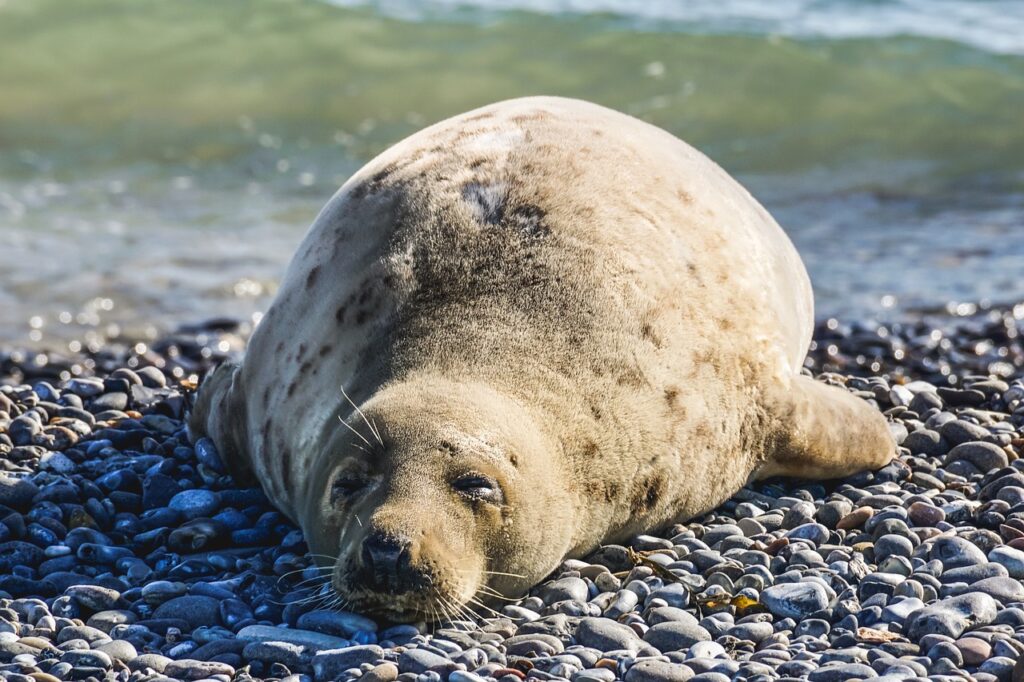
Namibia’s Skeleton Coast is unlike any other beach destination in Africa — or the world. It’s a surreal, rugged stretch of coastline where the Namib Desert meets the Atlantic Ocean, creating a dreamlike landscape of windswept dunes, shipwrecks, and colonies of fur seals. It’s not the place for tropical cocktails and sunbathing, but rather a raw, powerful experience of nature that’s perfect for travelers seeking solitude, stunning scenery, and off-the-grid adventure.
Travel Tips for the Skeleton Coast
- Currency: Namibian Dollar (NAD), which is pegged 1:1 to the South African Rand (ZAR). Both are accepted everywhere. Credit cards are accepted in most hotels and shops, but bring cash for remote areas.
- Best Time to Visit: May to October is the dry season with clear skies and cooler temperatures. November to March is hotter with more dramatic coastal fog — beautiful but less predictable.
- Health: No vaccines required unless arriving from a yellow fever country. No malaria risk along the coast, but bring sun protection, lip balm, and layers — coastal temps fluctuate quickly.
- Local Etiquette: Namibians are generally warm and polite. Greetings are appreciated. Modest dress is expected in towns, even if the beaches are wild and empty.
- Safety: Namibia is very safe, but the coast is isolated. Drive with care (many roads are gravel or sand), fuel up in advance, and always tell someone your route. There’s little to no cell reception in many areas.
How to Get to the Skeleton Coast
Most travelers base themselves in Swakopmund or Henties Bay, which serve as gateways to the Skeleton Coast region.
Fly into Windhoek Hosea Kutako International Airport (WDH), then connect by car or flight to Swakopmund or Walvis Bay:
By Plane:
- Windhoek to Walvis Bay (WVB) – 1-hour flights with Airlink or FlyNamibia (~$100 USD)
- Walvis Bay to Swakopmund by car: 30 minutes via B2 highway
By Car from Windhoek:
- Drive to Swakopmund (~4–5 hours via B1 and B2 roads)
- Rental cars are widely available at Windhoek airport; choose a 4×4 or high-clearance vehicle if going far north
Public Transport:
- Intercape buses run between Windhoek and Swakopmund/Walvis Bay (~5–7 hours)
- Shared taxis also operate but aren’t recommended for travelers with luggage or unfamiliarity with the system
- More info: https://www.intercape.co.za
Getting Around the Skeleton Coast
You’ll need your own vehicle — ideally a 4×4 — to explore this region properly. Most travelers rent a car and self-drive between the highlights.
- Roads are a mix of paved highways (B2) and gravel or salt roads (C34, D2302, etc.)
- Watch for sand patches, wildlife, and fog in the early morning
- Fuel stations are limited: fill up in Swakopmund, Henties Bay, or Terrace Bay
There is no public transportation along the Skeleton Coast, and no ride-hailing services like Uber or Bolt. If you don’t drive, join a guided overland tour departing from Swakopmund.
Top Beaches and Coastal Experiences
Swakopmund Beach & Jetty Area
Swakopmund is a charming German-influenced coastal town — the most urban “beach” experience on Namibia’s coastline. The main beach offers walkable access, cafés, and wind-protected coves.
Sea Conditions:
The Atlantic here is cold (12–16°C) year-round, with strong waves and currents. Not ideal for swimming.
Good for Swimming?
Not really. The water is cold and rough, but fine for wading or short dips in summer.
Good for Children?
There’s a tidal pool at the Mole, a sheltered area popular with local families and relatively safe for children.
Things to Do:
- Stroll the Swakopmund Jetty at sunset
- Grab lunch at The Tug Restaurant, perched right on the sea
- Visit the Swakopmund Museum to learn about the region’s natural history
Henties Bay
About 70 km north of Swakopmund, Henties Bay is a small fishing town popular with locals for its peace and surf casting.
Sea Conditions:
Exposed and cold — with strong undertow and rough waves. Not safe for swimming.
Good for Swimming?
No — stick to walking the beach and watching the dramatic surf.
Good for Children?
Better for beachcombing than swimming. Supervision required at all times.
Things to Do:
- Go beach fishing (permits required)
- 4×4 over the dunes
- Explore the dried-out Omaruru River bed
Skeleton Coast National Park
A remote, haunting stretch of desert coast stretching from the Ugab River to the Kunene River at the Angolan border.
Sea Conditions:
Wild, freezing Atlantic waters, treacherous currents, and heavy fog — the reason behind its nickname “The Land God Made in Anger.”
Good for Swimming?
Absolutely not. This is a non-swimming coast, meant for photography and exploration.
Good for Children?
No water activities here — this is for adventure travelers and landscape lovers.
Things to Do:
- Visit Cape Cross Seal Reserve to see thousands of Cape fur seals (best in Nov–Dec)
- Photograph shipwrecks near the coast (many visible from the road)
- Drive up to Torra Bay or Terrace Bay for total remoteness
Entry: Permit required for Skeleton Coast Park (available at Ugab Gate or Springbokwasser Gate). Check current fees and road conditions here: https://www.nwr.com.na/resorts/skeleton-coast-park
Local Providers and Activities
Desert + Coast Tours:
- Turnstone Tours – Day trips from Swakopmund to Sandwich Harbour, Skeleton Coast, or seal colonies
https://www.turnstone-tours.com - Charly’s Desert Tours – Combo dune and coast tours, including off-roading and cultural stops
https://www.charlysdeserttours.com
Photography + Wildlife:
- Cape Cross Seal Reserve – Drive yourself or book a half-day tour from Swakopmund
- Sandwich Harbour – Coastal dunes where the sea meets the sand mountains. 4×4 tours required.
Where to Stay on Namibia’s Skeleton Coast
- Budget: Skeleton Beach Backpackers – Swakopmund
Friendly, basic hostel with dorms and private rooms just 5 minutes from the beach. Shared kitchen and garden. Dorms from $18 USD, private rooms from $35. Great for backpackers with cars.
https://skeletonbeachbackpackers.com - Mid-Range: Henties Bay Self-Catering Guesthouse – Henties Bay
Comfortable apartments with sea views and BBQ facilities. Close to shops and fishing spots. From $70–$100 USD per night. Book via Hotels.com, Expedia or directly via Facebook. - Luxury: Shipwreck Lodge – Skeleton Coast Park
The only high-end lodge inside the park, located near the Hoarusib River. Offers guided drives to shipwrecks, desert elephants, and sand dunes. Rates start at $750 USD per person per night, all-inclusive. Access by charter flight or 4×4 transfer.
https://www.naturalselection.travel/camps/shipwreck-lodge
You can also browse Hotels.com, Expedia or SafariNow for guesthouses in Swakopmund or beach lodges in Henties Bay. Many remote accommodations require advance booking and a 4×4 to reach.
7. Madagascar – Unspoiled Beaches, Coral Reefs, and Wild Island Charm
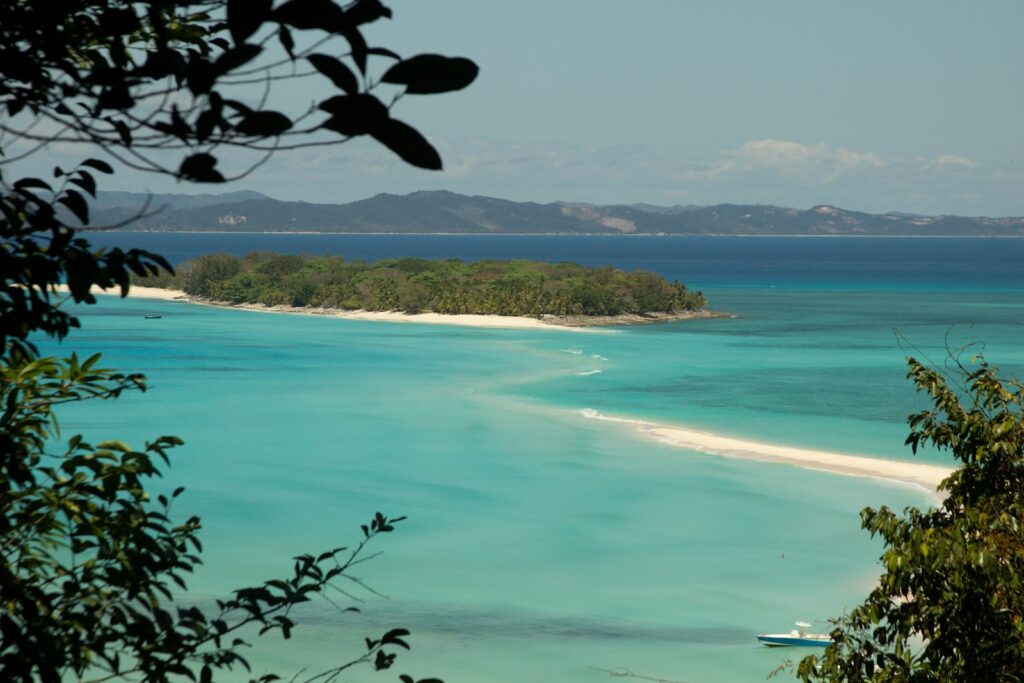
Madagascar may be best known for its lemurs and baobabs, but its coastlines are some of the most beautiful and untouched in Africa. With soft white sands, shallow turquoise bays, and coral reefs teeming with marine life, this Indian Ocean island is a paradise for nature lovers, divers, and travelers looking to escape the mainstream. You won’t find mega resorts here — Madagascar’s beaches are laid-back, raw, and deeply connected to local culture and biodiversity.
Travel Tips for Madagascar
- Currency: Malagasy Ariary (MGA). Credit cards are accepted in upscale hotels and tourist hubs, but cash is king in most of the country. Bring Euros or USD to exchange.
- Best Time to Visit: May to October (dry season) is ideal for beach travel, whale watching, and diving. Avoid January to March — cyclone season brings heavy rain and rough seas.
- Health: Yellow fever certificate required if coming from a risk country. Malaria is present — take precautions. Also pack mosquito repellent, reef-safe sunscreen, and travel insurance that covers remote evacuation.
- Local Etiquette: Madagascar has strong local taboos (fady) that vary by region — always ask your guide before visiting sacred places. Modest dress is appreciated in villages.
- Safety: The coasts are generally safe, especially tourist areas. That said, avoid walking alone at night, and use hotel-recommended transport. Political unrest and road conditions in the interior can be unpredictable — stay updated locally.
How to Get to Madagascar
Most international travelers fly into Antananarivo (TNR), then connect by domestic flight or long-distance taxi-brousse (shared minibus) to the coast.
Main coastal hubs include:
- Nosy Be (Fascene Airport / NOS) – North; best for beach resorts, diving
- Tuléar / Toliara (TLE) – Southwest; access point for Anakao, Ifaty
- Sainte Marie Island (SMS) – Northeast; peaceful island with great whale watching
By Plane:
- Direct international flights to Nosy Be from Paris, Milan, Johannesburg (Air Austral, Ethiopian, Airlink)
- Domestic flights from Antananarivo to Nosy Be, Tuléar, Sainte Marie via Tsaradia (subsidiary of Air Madagascar)
By Land + Sea:
- From Tana to Tuléar: 16+ hour drive (with overnight stop), then taxi-boat to Anakao
- From Tamatave to Sainte Marie: Ferry or small plane from Soanierana-Ivongo port (see: El Condor Ferry)
Getting Around Madagascar
Madagascar’s public transportation system is diverse but lacks centralized online resources for schedules and routes. Travelers are advised to consult local sources upon arrival for the most accurate information. Hotels and hostels often provide up-to-date details on transportation options, and locals can offer valuable insights into navigating the public transit system.
Additionally, mobile apps like Moovit may offer some assistance in mapping out routes, though coverage may be limited. There aren’t organized public buses there, like you’d find in most major cities or countries. Given the variability in schedules and comfort levels, it’s advisable to plan your routes in advance and remain flexible.
Also, always agree on taxi fares before starting your journey to avoid misunderstandings.
- Domestic Flights: Fast but expensive and sometimes unreliable. Always reconfirm flights.
- Taxi-brousse: Shared minibuses are affordable but very slow and uncomfortable over long distances.
- Taxi-Be: In urban areas like Antananarivo, Taxi-Be are larger minibuses operating on fixed routes. They are a common means of city transport but can be overcrowded and lack fixed timetables.
- Taxis: Available in cities, these are often older vehicles without meters. Fares should be negotiated before starting the journey.
- Car + Driver Rental: The most flexible and safest way to get around, especially if you plan to visit multiple regions. Available through hotels or tour operators.
- Tuk-tuks and taxis are common in towns like Nosy Be and Tuléar.
- Pousse-Pousse: Human-powered rickshaws found in towns like Antsirabe and Mahajanga, suitable for short trips.
- Trains: Limited rail services exist, such as the Fianarantsoa to Manakara route, offering scenic journeys but with infrequent and slow services.
- No ride-sharing apps operate in Madagascar. All transport is organized locally.
Top Beaches and Activities
Nosy Be & Nosy Iranja
Nosy Be is Madagascar’s most accessible and popular beach destination, known for its calm waters, marine parks, and relaxed island culture. Just off the northwest coast, it’s a good mix of convenience and adventure.
Sea Conditions:
Protected by surrounding islands, the waters around Nosy Be are calm, warm, and ideal for swimming and snorkeling year-round.
Good for Swimming?
Yes — especially at Andilana Beach and Nosy Iranja, where the waters are crystal clear with gradual depth.
Good for Children?
Yes — gentle waves, wide beaches, and no strong currents.
Things to Do:
- Snorkel with sea turtles at Nosy Tanikely Marine Reserve
- Take a full-day boat trip to Nosy Iranja, known for its sandbar and turquoise lagoon
- Visit the local rum distillery or the sacred banyan tree
Getting There from Nosy Be Airport (NOS):
- 30–40 minutes by taxi to most beaches ($15–$20 USD)
- Excursions to nearby islands depart from Hell-Ville or Ambatoloaka
Local Providers:
- Scuba Nosy Be – PADI-certified, island hopping, snorkeling trips (https://scubanosybe.com)
- Madagascar Excursions Nosy Be – Day tours to Iranja, Tanikely, and Lokobe Reserve
Anakao & Ifaty (Southwest Coast)
These remote beach villages south of Tuléar are perfect for escaping the crowds. Anakao is known for surfing, traditional Vezo fishing culture, and boat access only.
Sea Conditions:
Generally calm inside the lagoon, with offshore reefs breaking waves. Occasional strong tides.
Good for Swimming?
Yes — especially in Ifaty and sheltered parts of Anakao.
Good for Children?
Yes in Ifaty; Anakao is more remote, with fewer services, but still has calm water zones.
Things to Do:
- Snorkel or dive the coral reef near Ifaty
- Visit the spiny forest for unique baobabs and birdlife
- Take a traditional pirogue sailing trip with Vezo fishermen
Surfing in Anakao:
The region boasts several surf spots, with some of the most renowned being:
- Jelly Babies: A reef break known for its consistent waves, suitable for various skill levels. surfcamp-suche.de
- Flame Balls: Another prominent reef break offering challenging waves for more experienced surfers.
- Antoleft (near Nosy Satrana): A left-hand break providing quality waves, accessible by boat. HOME – Madagascar Surf Trip
Surfing Services and Accommodations:
Several establishments in Anakao cater to surfers, offering lessons, equipment rentals, and guided surf tours:
- Mada Surf Ranch: Established in 2018, this beachfront lodge offers accommodations ranging from garden doubles to beachfront villas. They provide surf equipment rentals and organize boat trips to various surf breaks. The lodge is also home to the Anakao Junior Surfing Squad, contributing to a family-friendly atmosphere.
- Vezo Surf Tours: Managed by local surf guide Max, Vezo Surf Tours specializes in surf guiding and arranges boat transfers to prime surf locations. They collaborate with Hotel Lalandaka in Anakao for accommodations, offering options suitable for individuals, couples, or groups.
- Madagascar Surf Trip: Operating mobile surf tours with a base camp at Mada Surf Ranch, they offer packages that include accommodation, meals, surf lessons, and equipment rental. Their tours cover a 50 km stretch of coastline, accessing over 18 breaks by boat.
Accessing Surf Spots:
Most surf breaks in Anakao are located approximately 5 kilometers from the beach and are accessible only by boat. It’s common practice to arrange boat transfers through local surf camps or tour operators to reach these spots.
Recommendations:
- Skill Level Assessment: While there are spots suitable for beginners, some reef breaks are better suited for intermediate to advanced surfers. It’s advisable to consult with local guides to select appropriate locations based on your experience.
- Equipment Rental: If traveling without personal gear, ensure that your chosen surf camp or tour operator provides suitable equipment.
Getting There from Tuléar:
- To Anakao: 45-minute boat ride (approx. $15–$20 USD) from the port in Tuléar
- To Ifaty: 30 km north of Tuléar by 4×4 or taxi (~1 hour, $10–$15 USD)
Local Providers for Diving:
- Anakao Ocean Lodge – Organizes diving, fishing, and boat transfers (https://www.anakaomadagascar.com)
- Atlantis Madagascar Dive Center (based in Ifaty): Offers shore diving, equipment rental, and PADI courses
Sainte Marie Island (Île Sainte-Marie)
A lush, laid-back island off Madagascar’s east coast, Sainte Marie is known for whale watching, cycling along quiet roads, and pirate history.
Sea Conditions:
Calm lagoons on the western side; reef-protected areas are excellent for swimming and snorkeling. Eastern coast is rougher and less swimmable.
Good for Swimming?
Yes — western beaches are great, especially Ambodifotatra and La Crique.
Good for Children?
Yes — shallow and warm in the west, with coral pools at low tide.
Things to Do:
- Go whale watching (July to September) with Cétamada
- Snorkel or dive the coral reef near Île aux Nattes
- Explore the Pirate Cemetery and mangrove forests
Getting There:
- Fly from Tana to Sainte Marie (Tsaradia Airlines)
- Or take a ferry from Soanierana-Ivongo (8–10 hours; schedule varies by season)
Local Providers:
- Cétamada – Whale watching and marine conservation tours (https://www.cetamada.org)
- Bora Dive & Research – Dive center on Île aux Nattes with full gear rental
Where to Stay in Madagascar
- Budget: Chez Maggie Hotel – Morondava (West Coast)
Family-run guesthouse with garden bungalows, a pool, and direct beach access. Great stopover before or after Avenue of the Baobabs. Doubles from $40–$60 USD.
https://www.chezmaggie.com - Mid-Range: Hotel Eden Lodge – Nosy Be
Eco-luxury lodge set in a marine protected area. Solar-powered bungalows, snorkeling right off the beach, and guided excursions. Rooms from $130–$160 USD.
https://edenlodge.net - Luxury: Princesse Bora Lodge & Spa – Sainte Marie Island
One of Madagascar’s top luxury stays. Beachfront villas, spa, infinity pool, and on-site dive center. Rates from $300–$400 USD/night depending on season.
https://www.princessebora.com
You’ll also find charming ecolodges and guesthouses on Hotels.com, Expedia, or contact hotels directly via WhatsApp or Facebook. Many of the best options in Madagascar don’t appear on big platforms, so it’s worth checking regional travel forums or local tour operators.
Discover more travel locations in Africa here!


